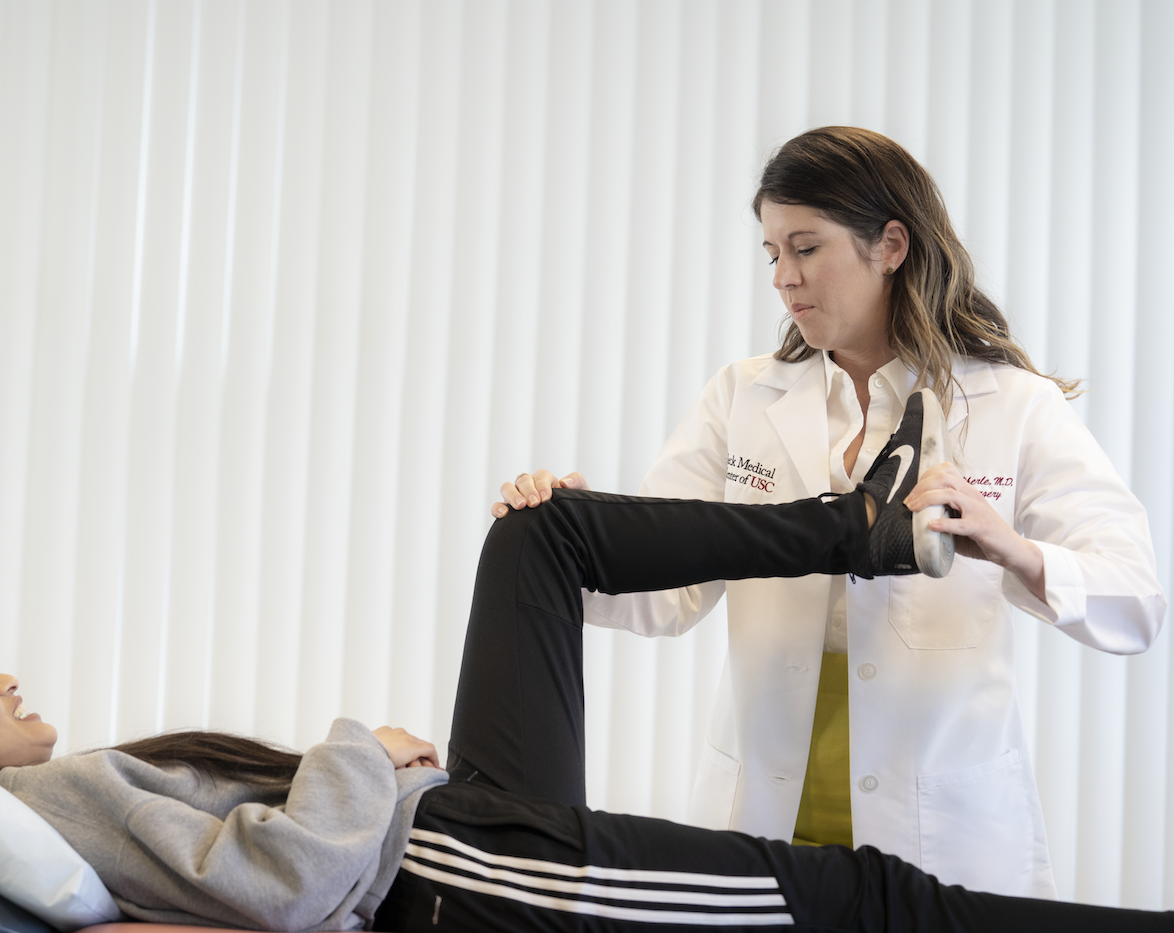
In orthopedic offices cortisone shots are offered to patients every day. What exactly is a cortisone shot and who needs it? What are the risks and benefits?
Let’s start at the beginning. Cortisone is the name used to describe a group of steroid medications we inject into the body. In orthopedics a cortisone shot is given into your knee, shoulder, finger etc… basically any joint space or area. Other names you may hear are methylprednisolone (Depo-Medrol), Triamcinolone (Kenalog) and betamethasone (Celestone).
I describe these injections to my patients as strong anti-inflammatory medications that are injected into (as one example) your knee. They work similar to anti-inflammatory medicines you take by mouth (like Advil or ibuprofen) by decreasing inflammation. However, the mechanism of how it works is different. Also, since we are directly injecting them into the area sometimes they are more effective.
What does the cortisone actually do? I want to make this super clear- a cortisone injection does one thing only- decrease pain. Cortisone does not fix the injury, repair the joint it is injected into, grow back cartilage or any other magic. Just pain relief.
How is the shot usually given? Most often cortisone is mixed with a standard numbing medication and injected using a syringe and needle. The numbing medication helps short-term with the pain (just like going to the dentist and getting numb before they pull a tooth) and it also helps distribute the cortisone evenly. My standard recipe is 40 mg of Kenalog and 4 mL of 1% lidocaine in the knee. Another doctor’s recipes may differ based on their preferences and experience.
When are cortisone shots needed? That is a difficult question without knowing the specifics of your injury or problem. That said, the most common thing injected with cortisone are the things that cause us pain. Makes sense, right? But also keep in mind all things that cause pain do not get a cortisone shot. One very common use for cortisone is in the treatment of osteoarthritis. Osteoarthritis is the degenerative breakdown of cartilage (a whole topic we will discuss another day) but simply put it is wear and tear on a joint surface. When someone has pain from osteoarthritis cortisone is often the first go-to for relief. Cortisone also can help with pain associated with meniscal tears, labral tears, bursitis, and several other conditions. Be mindful that there are certain areas of the body, such as tendons, ligaments or soft tissues spaces that either should not have cortisone injected at all or it is at best questionable to do so.
Who needs one? That is a great discussion for you to have with your doctor! I would ask the following: What are the goals of the injection? How can I optimize the pain relief to make it better long term? What are the risks, side effects or alternatives? Remember although very well tolerated any medication we give isn’t a free pass and has risks and side effects. You need to know these ahead of time.
Here are some of the ways I answer the above. First, how to optimize the pain relief? I optimize the pain relief after giving a cortisone shot by focusing on the overall function of the body. If you have a shoulder problem, I want your shoulder to be functioning as close to a normal shoulder as possible. This is often hard to do! Your shoulder moves differently when you have pain. Without guidance it is nearly impossible to fix. Also, with a shoulder problem you are limited in your ability to use that arm normally which can affect other body parts. This is called compensation. It can include how you hold your arm, the alignment of your neck or back, and even how you move the other arm. We need to break this cycle for your pain to go away for good! Cortisone can help with the pain but if the movement pattern is not improved it isn’t a long-term solution. Why? Your body has gotten accustomed to moving the injured way. If you get cortisone and are having less pain, this is a great time to try to optimize the shoulder movement to keep the pain away. I often recommend physical therapy for this. Also please note- physical therapy can be fantastic even without a cortisone shot.
Next, what are the risks? Every medication has risk. I always remind patients every needle stick has a risk of bleeding and infection. The skin is your safety barrier and sticking a hole in it means breaking that barrier. When sticking a needle into the skin there are structures below the surface. Depending on where the needle is headed (more for certain injections than others) we need to be aware of blood vessels to avoid bleeding. These are both very small risks but depending on the person getting the injection. Another important risk I always discuss applies to patients with diabetes. We know cortisone injections can transiently increase blood sugar for about two weeks after the injection. If you are a well-controlled diabetic you can likely still have the injection, but your physician should have you monitor your sugars closely and report any issues. Unfortunately, if your sugars are out of control before the injection it may not be safe to proceed.
How long does the pain relief last? That is highly variable. I tell my patients the medication effect lasts a few months. That is how long the medication itself is altering the insides of joint. However, if you do more (refer back to the above about PT and shoulder pain), then it may last much longer. Another possible and important ‘risk’ to be clear on is sometimes cortisone does not provide any pain relief at all.
What if I need to get several cortisone injections to maintain pain relief? This again is variable but could be a concern. Let’s revisit the knee example for osteoarthritis. You as my patient have had one the injection every few years and otherwise have done well! You are able maintain your exercise program, stay at a healthy weight and are maintaining cardiovascular fitness… to me, this is great! Those benefits clearly outweigh the occasional injection. However, if you notice that you are having repeat injections and the time between them is getting shorter to maintain pain control this may not be the best solution any longer. There is some data that suggests repeated cortisone injections may advance breakdown of the tissue faster than normal. So, we must proceed with caution.
Overall injections of cortisone are safe and well-tolerated in many and can be extremely helpful in alleviating pain. If you have questions about cortisone or whether you are a candidate for one it may be time for an educated discussion with your orthopedic physician.






No comment yet, add your voice below!